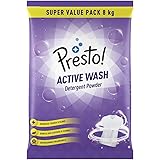In today’s digital world, you need to be able to drive users to your site so they can find what they’re looking for. To do that, you need a solid online presence that caters to the needs of your target audience. With search engine optimization (SEO), you can have an amazing website that drives visitors and helps them find what they are looking for. In this article, we will explore the ins and outs of effective SEO so you can create a website that is as user-friendly as possible and works with Google Search Engine Optimization. Read on to learn more about how this works, why it’s important, and some basic strategies you can implement today!
What is SEO?
Search engine optimization is a process that websites use to improve their ranking with search engines like Google. In other words, it’s a set of practices that help your website show up higher in the search results on Google and other search engines like Bing and Yahoo. With SEO, you want to create a website that serves your target audience with relevant, quality content that’s optimized for the keywords you want to rank for. Essentially, you want to create an optimized page that allows Google to easily find your site, so it shows up in the search results for your chosen keywords. SEO is one of the most important things to focus on when it comes to marketing your site. Despite the fact that you may have a quality product, amazing customer support, and a great user experience, if your site isn’t in the top spots on Google, you won’t be getting any leads or customers. And, you’ll also have a harder time keeping new users coming back to your site.
How Does SEO Work?
SEO is one of those marketing concepts that sounds easy enough, but once you get into it, you quickly realize just how complicated it is. Luckily, there are actually a few easy ways to do it. First, you want to research your market. There are so many factors that go into SEO, so you want to make sure you’re doing everything you can to cater to your audience. With this research, you can understand what your audience wants and needs. You can also figure out what problems your audience might be facing, so you can find solutions for them. With this knowledge in hand, you can then create content that addresses these problems and offers solutions. Another major part of SEO is creating a good domain name and purchasing an appropriate, keyword-rich meta tag. When it comes to your domain name, you want to make sure it’s relevant to your site and has relevant, keyword-rich tags on it. To get your meta tags right, you want to make sure they include the right keywords and phrases. You also want to make sure they’re in the proper format so Google can easily read and index your page.
Why Is SEO Important?
Search engine optimization is one of the most important marketing strategies you can implement. It’s essential for SEO for a few reasons. The first is that you can’t rank for any keywords if you don’t show up in the top spots on Google’s search engine results page. This makes all the difference in whether your site gets any visitors or not. For this reason, it’s so important to make sure your SEO is as high-quality as possible. SEO is also a great way to drive traffic to your site. With it, you can create a great content strategy that covers a wide range of topics. You can also integrate these topics into your blog post or page content, using the right keywords and phrases to help you rank even higher on Google. This means you can drive traffic to your site and ensure that those visitors are finding what they need and getting what they want.
Essential Strategies For Effective SEO
Now that you know why SEO is important, let’s discuss some of the basic strategies you can use to help boost your site’s SEO. Some of these may seem a bit overwhelming at first, but if you break them down and implement them one at a time, you’ll see results very quickly. It’s important to remember that SEO is all about the keywords you use on your pages and posts. You want to make sure you’re using the right words and phrases to boost your site’s SEO. You also want to remember that you can’t just use one type of keyword. You want to make sure you have an equal mix of both long-tail and headwords in your keywords.
Long-Tail Keywords
The first type of keyword is called long-tail keywords. What these are are keywords that are a bit more specific. For example, if you’re selling running shoes, a long-tail keyword might be “the best running shoes” or “the best running shoes for men.” These are very specific keywords that will help you rank well for them. You also want to make sure that these keywords are relevant to your page or blog post. For example, if your page is about the best running shoes for men, you want to make sure these keywords are focused on men’s shoes. Using these specific keywords will help you rank well and drive more traffic to your site.
Headwords
The second type of keyword is called headwords. What these are are broad, general keywords that are more broad in nature. For example, the word “running” is a broad, headword keyword. By contrast, “men’s running shoes” is a long-tail keyword that’s more specific. These are the keywords you want to focus on when it comes to your SEO. You want to make sure that these headwords are relevant to your page or blog post. For example, if you’re writing about running for men, you want to make sure you’re including these keywords. Doing this will help you rank better and drive more traffic to your site.
Avoiding Keyword stuffing
Another major factor when it comes to SEO is avoiding keyword stuffing. This means you want to make sure you’re using the right amount of keywords in your content. Remember that you want to make sure they’re relevant and include both long-tail and headwords. You also want to make sure you’re not using more than 10% of your total keyword usage in one keyword. This means you want to make sure you keep your keywords relevant to the page you’re creating, while also making sure you’re not overdoing it.
Continuing with the Running Shoes example, it’s best to mix up your long-tail keywords with your headwords. You want to make sure the headwords are more broad, while the long-tail keywords are more specific.
This way, you’re still covering both the long-tail and headword keywords that you want to rank for, while also keeping your content relevant and specific.
The best way to make sure you’re not keyword stuffing is to create a keyword density chart. This way, you can easily check how many times you’re using your keywords and make sure you’re not overdoing it.
With this chart, you can easily check how many times each keyword is used in your content. You can then make sure you’re not keyword stuffing and also make sure your content is as relevant and as targeted as possible.
Keeping Your Focus With Your Keywords
Another major factor when it comes to boosting your site’s SEO is making sure you keep your keywords focused on your content. This means you want to keep your keywords within the topics in your content, while also making sure they’re as relevant as possible and relevant to your target audience. You want to make sure you’re not just using a single keyword, while also making sure it’s relevant and focused on a specific topic. This will help you boost your site’s SEO and ensure you’re driving as much traffic to your pages as possible.
Why SEO is important for any website and how to be make it perfect
There are a number of ways to improve seo.
Take a closer look: However, there are many ways to improve the SEO of your website pages. Search engines look for elements such as title tags, keywords, image tags, internal link structure, and inbound links (also known as backlinks). These are just to name a few.
To improve your SEO, you might assume that you need to create new blog content. While this is true to an extent, you should also focus a lot of your time and effort on your existing blog content. In particular, repurpose and update your current content and delete your outdated content.
One way to positively influence this SEO factor is to implement a historical optimization strategy. This strategy works for bloggers that have been around for a few years and already have a lot of content. By updating these old posts with new insights and data, you can significantly impact your blog SEO without creating a ton of new content. Website crawlers will reindex the page – taking into account the updated content – giving it another chance to compete in the SERPs. It’s really a win-win situation.
Seo is important for any website to improve traffic and rankings.
SEOs use their understanding of these ranking factors to design and implement search engine marketing strategies that balance on-page, off-page, and technical best practices. Organizations looking to achieve and maintain high SERP rankings and thus generate a lot of quality user traffic should adopt strategies that prioritize user experience, employ non-manipulative ranking strategies, and grow with search engines and users. Behavior change.
SEO is all about making your website search engine friendly, but it can also improve your customers’ experience when they visit your website. Putting in the work to generate useful and high-quality content, making your website faster and more responsive, adding backlinks and improving every page will generally result in an excellent website, in addition to an SEO-optimized website. Factors that improve usability include strong site structure and navigation, both of which are factors in how search engines rank a site.
SEO is important because it helps people find information and discover pages on the World Wide Web. Search engine optimization is especially important for businesses, as it ensures that they answer their audience’s top questions on search engines while driving traffic to their products and services.
Last but not least, you also want to make sure you’re not overdoing it. Many times, people will keyword stuff on the back end and just add one keyword to every page or blog post they create. While this may seem like a good way to boost your sites’ SEO, it can actually have the opposite effect.
This is because you want to make sure your keywords are focused on a specific topic or relevant to a specific page. If you’re keyword stuffing, you’re not doing this and this







